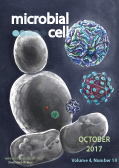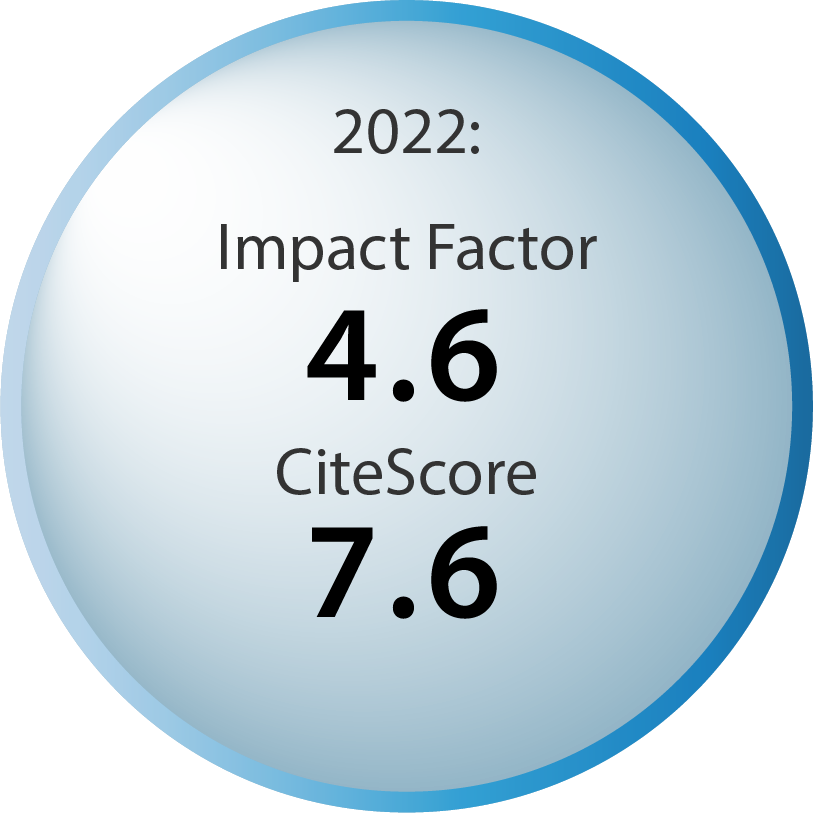Table of contents
Volume 4, Issue 10, pp. 311 - 364, October 2017
Cover: This pencil drawing depicts two dividing budding yeast cells (top left) and fission yeast cells (bottom) that are imaginably being invaded by (from top) the Zika virus (ZIKV), the human immunodeficiency virus (HIV) and other viruses (image by Richard Y. Zhao and Jessica Qiu, University of Maryland School of Medicine, USA); image modified by MIC. The cover is published under the Creative Commons Attribution (CC BY) license.
Enlarge issue cover
Yeast for virus research
Richard Yuqi Zhao
Reviews |
page 311-330 | 10.15698/mic2017.10.592 | Full text | PDF |
Abstract
Budding yeast (Saccharomyces cerevisiae) and fission yeast (Schizosaccharomyces pombe) are two popular model organisms for virus research. They are natural hosts for viruses as they carry their own indigenous viruses. Both yeasts have been used for studies of plant, animal and human viruses. Many positive sense (+) RNA viruses and some DNA viruses replicate with various levels in yeasts, thus allowing study of those viral activities during viral life cycle. Yeasts are single cell eukaryotic organisms. Hence, many of the fundamental cellular functions such as cell cycle regulation or programed cell death are highly conserved from yeasts to higher eukaryotes. Therefore, they are particularly suited to study the impact of those viral activities on related cellular activities during virus-host interactions. Yeasts present many unique advantages in virus research over high eukaryotes. Yeast cells are easy to maintain in the laboratory with relative short doubling time. They are non-biohazardous, genetically amendable with small genomes that permit genome-wide analysis of virologic and cellular functions. In this review, similarities and differences of these two yeasts are described. Studies of virologic activities such as viral translation, viral replication and genome-wide study of virus-cell interactions in yeasts are highlighted. Impacts of viral proteins on basic cellular functions such as cell cycle regulation and programed cell death are discussed. Potential applications of using yeasts as hosts to carry out functional analysis of small viral genome and to develop high throughput drug screening platform for the discovery of antiviral drugs are presented.
Identification of SUMO conjugation sites in the budding yeast proteome
Miguel Esteras, I-Chun Liu, Ambrosius P. Snijders, Adam Jarmuz and Luis Aragon
Research Articles |
page 331-341 | 10.15698/mic2017.10.593 | Full text | PDF |
Abstract
Post-translational modification by the small ubiquitin-like modifier (SUMO) is an important mechanism regulating protein function. Identification of SUMO conjugation sites on substrates is a challenging task. Here we employed a proteomic method to map SUMO acceptor lysines in budding yeast proteins. We report the identification of 257 lysine residues where SUMO is potentially attached. Amongst the hits, we identified already known SUMO substrates and sites, confirming the success of the approach. In addition, we tested several of the novel substrates using SUMO immunoprecipitation analysis and confirmed that the SUMO acceptor lysines identified in these proteins are indeed bona fide SUMOylation sites. We believe that the collection of SUMO sites presented here is an important resource for future functional studies of SUMOylation in yeast.
Ydj1 governs fungal morphogenesis and stress response, and facilitates mitochondrial protein import via Mas1 and Mas2
Jinglin L. Xie, Iryna Bohovych, Erin O.Y. Wong, Jean-Philippe Lambert, Anne-Claude Gingras, Oleh Khalimonchuk, Leah E. Cowen and Michelle D. Leach
Research Articles |
page 342-361 | 10.15698/mic2017.10.594 | Full text | PDF |
Abstract
Mitochondria underpin metabolism, bioenergetics, signalling, development and cell death in eukaryotes. Most of the ~1,000 yeast mitochondrial proteins are encoded in the nucleus and synthesised as precursors in the cytosol, with mitochondrial import facilitated by molecular chaperones. Here, we focus on the Hsp40 chaperone Ydj1 in the fungal pathogen Candida albicans, finding that it is localised to both the cytosol and outer mitochondrial membrane, and is required for cellular stress responses and for filamentation, a key virulence trait. Mapping the Ydj1 protein interaction network highlighted connections with co-chaperones and regulators of filamentation. Furthermore, the mitochondrial processing peptidases Mas1 and Mas2 were highly enriched for interaction with Ydj1. Additional analysis demonstrated that loss of MAS1, MAS2 or YDJ1 perturbs mitochondrial morphology and function. Deletion of YDJ1 impairs import of Su9, a protein that is cleaved to a mature form by Mas1 and Mas2. Thus, we highlight a novel role for Ydj1 in cellular morphogenesis, stress responses, and mitochondrial import in the fungal kingdom.
Macrophages as drivers of an opportunistic infection
Annette C. Vergunst, Nazareth Lopez Carranza, Lili Zhang, Margarida C. Gomes, Yara Tasrini, Annemarie H. Meijer and David O’Callaghan
Microreviews |
page 362-364 | 10.15698/mic2017.10.595 | Full text | PDF |
Abstract
Opportunistic pathogens are a worldwide cause of mortality and morbidity, and infections with intrinsically antibiotic-resistant pathogens have a large clinical, social and economic impact. Bacteria belonging to the Burkholderia cepacia complex (Bcc), ubiquitous in natural and industrial environments, are notorious pathogens for individuals with cystic fibrosis (CF). In addition, Burkholderia cenocepacia is emerging as the culprit of non-CF related, sometimes fatal infections. Knowledge of the underlying infection mechanism of these pathogens is important for efficient treatment, however, to date not much is known about the lifestyle of Bcc bacteria during infection. In our recent study published in PLoS Pathogens, we provide experimental evidence that macrophages are critically important for proliferation of B. cenocepacia, and are major drivers of fatal pro-inflammatory infections in zebrafish larvae. This is in agreement with recent clinical information showing that B. cenocepacia is mainly localised in phagocytes in infected CF lungs. A predominant intramacrophage stage and a host-detrimental role for macrophages have major implications for treatment strategies of both CF and non-CF infections. Intracellular survival of bacteria traditionally classified as extracellular, including Staphylococcus aureus and Pseudomonas aeruginosa, is an emerging theme. Our finding that macrophages are essential for proliferation of B. cenocepacia in the host suggests a new paradigm for Bcc infections and urges the development of novel anti-infectious therapies to efficiently disarm these intrinsically antibiotic resistant facultative intracellular pathogens.










